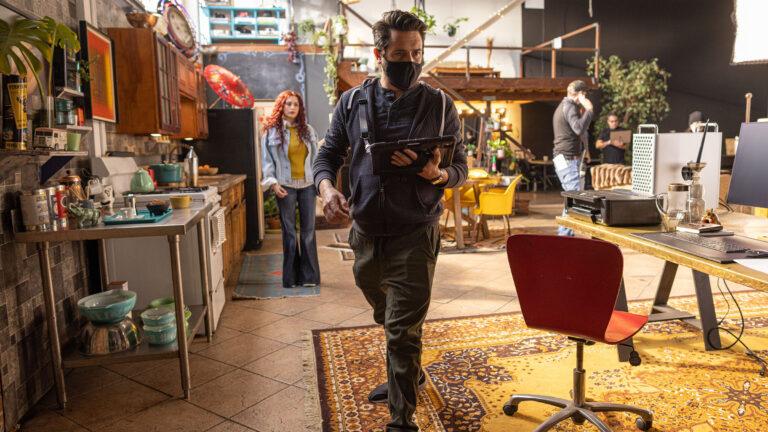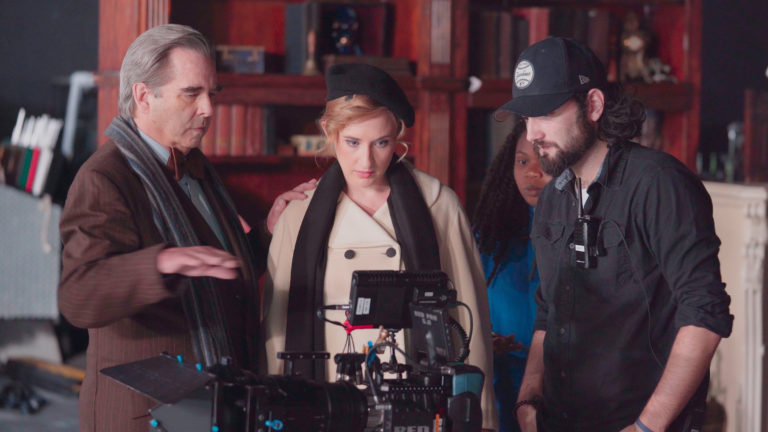Half of directing is casting the right actors.
John Huston
You have a great script and a capable team who share your creative goals. But before you start production, you have to cast the film. Casting is one of the most important and creative decisions a director makes.
The Challenge of Casting
If you aren’t already famous—or super rich—you’ll probably be casting “undiscovered” actors. That’s not to say you can’t find great performers. There are talented actors at all levels of the industry, and many of them regularly audition for short films. You can find the right person for your project. But it’s going to take some footwork.
You can simplify the process by hiring a casting director. But a reputable casting director is going to cost serious money—money you could put into production. Maybe a casting director is the right choice for your project, but—when in doubt—I recommend doing the work yourself and putting the money on the screen.
The following is a primer on the three major tasks of casting—the casting call, auditions, and callbacks. We hope you’ll find it useful, whether casting for the first time, or trying to improve your casting process.
The Casting Call
A casting call is an announcement that you are holding auditions. While feature film casting calls are occasionally nondescript, a short film casting call should always be specific and informative.
This descriptive version of a casting call is called a breakdown. It’s your best tool for bringing actors in to audition.
The breakdown for your short film should include the following:
- Title of the film
- Logline/brief synopsis
- Union status (SAG-AFTRA)
- Key team members (if impressive)
- Character descriptions for all major roles
- Production dates
- Contact information for the casting director (you)
- Dates and times of auditions
You should use an electronic breakdown-posting service as your first line of outreach. Breakdown Express, L.A. Casting, and Backstage are among the largest casting call services. If your project is SAG signatory, I recommend Breakdown Express, but each service has its pros and cons.
Not sure if you want to go SAG? Being a signatory gives you access to the widest pool of professional actors, but it does come with logistical and financial responsibilities. Read the SAG-AFTRA signatory agreements and make an informed decision.
Get the best results from your casting call:
- Craft an amazing logline: No actor wants to be in a movie that’s boring, cliché, or offensive (in the wrong way). Your logline should convince actors this is a project they want to be involved with. (If you haven’t, read our post on loglines.)
- Write compelling character descriptions: No one wants to audition for “Tom: Laura’s boyfriend.” Every character should have history, goals, strengths, and flaws—even if they aren’t the lead. This is the content that your actor will bring in to their audition. If the story doesn’t make you imagine rich character descriptions, consider a rewrite before casting.
- Don’t wait for actors to come to you: Actors will find your electronic breakdown and submit, but there’s no guarantee the right actors will. Consider posting a one-sheet of your breakdown in places actors go—colleges and local theater companies are good places to start.
- Reach out to experts: Do you know a theater professor, a working actor, or a more established filmmaker? Send them a copy of the script and ask if they have recommendations. A good word from them will go a long ways.
Auditions
Intimidating as they are, auditions are a pretty simple process. You send out sides and book time with your actors. They perform the scene for you. You provide an adjustment, and the actor does the scene again. You might try something different and do a third reading. The actor shakes your hand and goes about their day.
Sides are brief scenes from your script that you use for your auditions. Keep them under three pages, so that the actor can learn the scene. If you write a lot of description, remove some from the sides so it’s easier to read. Short sides also allow you to do more takes of the scene.
Adjustments are decisions you make to get different responses from the actor. Try to keep your adjustments simple (e.g. “make her confess” or “pump up his ego”). Directing emotion can be tricky (“just like that but sadder”), so it’s a good idea to stick with actions when you can. Avoid using backstory in place of actual direction.
Most casting directors schedule 15 minutes per actor in 4-hour blocks. The following video from Rocketjump Film School is a good example of the traditional audition format. It’s also a good indicator of what a professional casting director would bring to your project.
This is a good template to start with, but you might find another format that works better for you. If you’re courageous, you might hold a group audition and direct several actors at once. Or invent a whole new way to hold auditions.
Get the most out of auditions:
- Bring someone to read with the actors: Having a reader will allow you to focus and make more thoughtful adjustments. Make sure the reader is familiar with your script, so they don’t steer actors the wrong way.
- Prepare adjustments in advance: Sometimes you’ll know just what to tell an actor. If you don’t, prepared adjustments will help things flow smoothly.
- Ask the actor questions: An actor can miss something in the script and end up somewhere totally strange. By asking them what their goals were in the scene, you can zero in on where things went awry (or awesome).
- Do the scene fast: Actors often slow down in an attempt to milk their performance. It’s great in the room and boring on-screen. Have them read it quickly to see a more natural performance and hear the rhythm of your dialogue.
- Record the auditions: This should be a no-brainer. With all the cameras available today, you have no excuse.
Be really, really nice to all the actors that come in and audition. I don’t care how busy, stressed, or tired you are. These artists took time out of their day, drove across town, and probably paid for parking, to come read for you—for free—knowing odds are they won’t get the part. They deserve your kindness.
Callbacks
Unlike the casting call and auditions, there isn’t a dominant industry model for callbacks. What’s consistent is this—callbacks are another chance to see an actor in the context of your film.
All callbacks should pair actors together (if they appear in a scene together). Most callbacks put the scene “on its feet,” getting actors moving and talking, away from the pages. Callbacks are whatever you need to see before you are comfortable casting the film.
Some people call back lots of actors for each part. I strongly recommend against this. It’s usually the sign of an indecisive director. Have courage. Make decisions, narrow down your callbacks list until it’s small enough that you can actually make an informed decision.
Get the most out of your callbacks:
- Block the scene: Work with the actors to map out the movement of the scene. This will show you how creative and collaborative they are. It will also warn you if an actor can’t hit their marks.
- Improv (if you like improv): Improv is a great way to test two actors’ chemistry, especially if you like to use improv on set.
- Don’t improv (if you don’t like improv): If you don’t use improv on set, don’t do it in your callbacks. Your goal is to test the actors under similar conditions to the actual production.
- Let the actors rehearse together: See what questions they ask each other. Learn how they block the scene together. These are tools you can use as a director.
- Do it fast: Ask your actors to do the scene as quickly as they comfortably can. This is a great way to pull away their rehearsed performance and see what their instincts are.
Casting your own film isn’t easy, but it’s a great skill to have and the hard work makes your movie better. Hopefully you’ve learned more about your project by making the breakdown and digging through the audition process. Callbacks have helped you find just the right person. Not only that, but they’ve provided context and tools that will help you direct the film.
According to John Huston, you’re halfway there.




